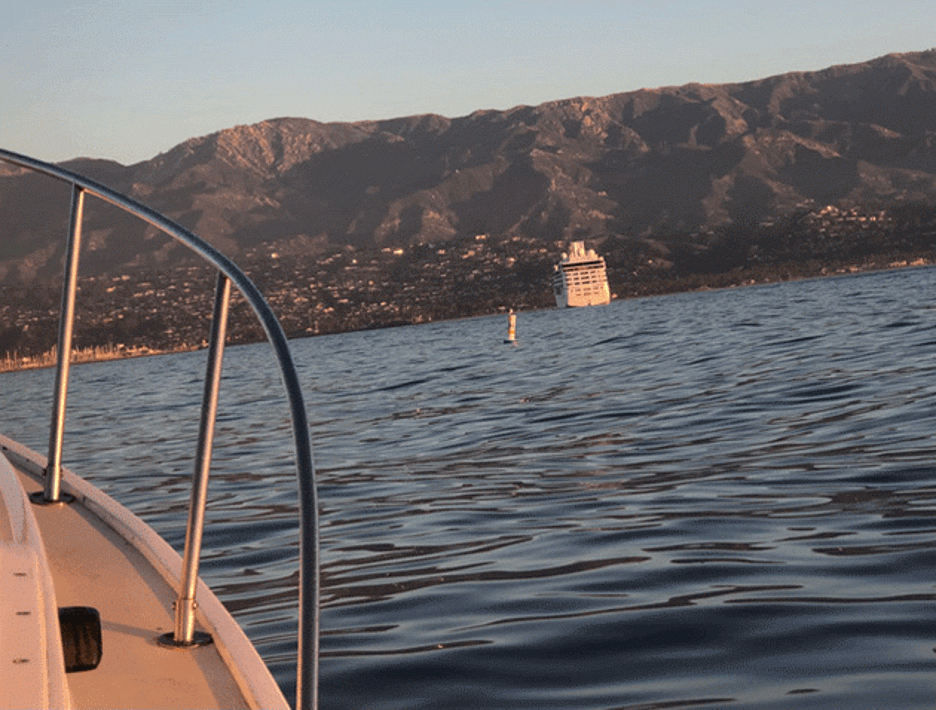
by Karen Telleen-Lawton, Noozhawk Columnist (Read the original column in Noozhawk)
As Mauna Loa showers the Big Island with spectacular fireworks and lava flows into the North Pacific, I wonder about its effects on the Papahānaumokuākea Marine National Monument around the Hawaiian Islands.

A recent National Geographic article reported on the state of the monument based on an October Science journal article. The study, with data collected from 2010 to 2019, offers evidence that the number of fish caught just outside the Marine Protected Area (MPA) is higher now than prior to the establishment of the MPA. It’s a promising story of recovery.
What is the state of the sea around Santa Barbara? I wouldn’t be surprised if facets of that question are the subject of numerous dissertations at UCSB, but some interesting anecdotes can give a few glimpses.
As a starting point, the Channel Islands National Marine Sanctuary, in place since 1980, has yielded results similar to Papahānaumokuākea’s. The first five-year study of the effect of the sanctuary on commercial fisheries, completed in 2008, suggested the reserves may have higher abundance, but that more time is needed to confirm trends.
The cetacean picture is more complex, since whales have mighty travel plans within and outside the Santa Barbara Bight’s boundaries. Fall is typically not a great time to take a whale watch, since California Grays, Blues, Minkes, and Humpbacks have departed for elsewhere.
However, Channel Islands Naturalist Corps volunteers have reported more whale sightings this fall than for any recent fall season in memory. Island Packers captains even spotted potential whale feeding activity between Santa Rosa and Santa Cruz islands.
That would sound like good news for whale species’ recovery, but some hypothesize the feeding activity was not a good sign. If they were indeed feeding, it could mean whales haven’t gotten enough to eat in their normal feeding grounds.
I virtually attended the most recent meeting of the Channel Islands National Marine Sanctuary. Two issues took center stage: the decommissioning of oil wells as their leases expire, and the increasing number of cruise ships visiting Santa Barbara.
The decommissioning program is in its early stages. Generally, four options are being considered for each platform. The same solution won’t necessary be appropriate for each location, but each decision could have major repercussions for Santa Barbara’s future.
Option 1 is removing the entire platform down to 15 feet below the mudline on the ocean floor; No. 2 removes everything down to the mudline.
The third option is cutting the platform into two pieces, removing most of the structure, and placing the smaller top portion on the seafloor as an artificial reef for sea plants and wildlife.
The final option is doing nothing. Eight of the 23 out-of-date platforms are set to be decommissioned by 2031.
The cruise ship program is equally visible and impactful. On Dec. 1, at the first of multiple public comment meetings being held by the city, supporters of the status quo pointed out that the increased air and water pollution are a very tiny fraction of the county’s pollutants. Thirty ships visited Santa Barbara in the last cruise season.
Nevertheless, an overwhelming percentage of the 100-plus attendees supported reforms to reduce the program’s environmental impact. Santa Barbara is not on track for meeting some state air and water emissions goals, and cruise ships discharge significant amounts of pollution into the ocean and atmosphere. The program is one area where locals have a modicum of control.
Santa Barbara Channelkeeper has taken a lead on this project, with Science and Policy Director Ben Pitterle now working to draft specific policy recommendations for the city’s consideration. The draft policy would utilize ship technologies, practices, and compliance history to vet cruise ship visitation.
By glimpsing these measures of community care, our little edge of the Pacific is not in a state of neglect. Climate change and extinctions are happening now and for the foreseeable future, so there is much to be done and no time to waste.
However, many citizens including fishers, seafood lovers, recreationalists, business people, and environmentalists are paying attention to what happens beyond the waves as well as what enters from the creeks.
We all care because the ocean is our community and we are its stewards.

Karen Telleen-Lawton, Noozhawk Columnist
Karen Telleen-Lawton is an eco-writer, sharing information and insights about economics and ecology, finances and the environment. Having recently retired from financial planning and advising, she spends more time exploring the outdoors — and reading and writing about it. The opinions expressed are her own.

